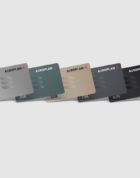Our round-the-world adventure was coming to an end. We had spent time in Warsaw, Hong Kong, and Beijing over a two-week period, and the final portion of the journey involved a stop in Anshan, a small city in Lioaning Province, from which my girlfriend Jessica originally hails.
As is commonplace in China, Anshan is considered “small” by nationwide standards despite playing host to over 3.5 million residents, which is more than all of Metro Vancouver. You might well pass through here on your way to more well-known places in Liaoning Province like Shenyang, the provincial capital, and Dalian, a major port city.
Therefore I thought I’d recap the day I spent in Anshan at the end of my trip prior to flying back to Toronto (Jessica was staying home for another week), the highlight of which was checking out the city’s famous Jade Buddha Palace.
The Jade Buddha statue here holds the Guinness World Record of being the largest Buddha sculpture ever forged out of a single piece of jade. It’s a testament to the breadth and diversity of natural and man-made wonders in China that even in a relatively cozy place like Anshan you’d find some kind of record-breaking tourist attraction.
The Jade Buddha Palace is located inside Anshan’s 219 Park, the main green space of the city.
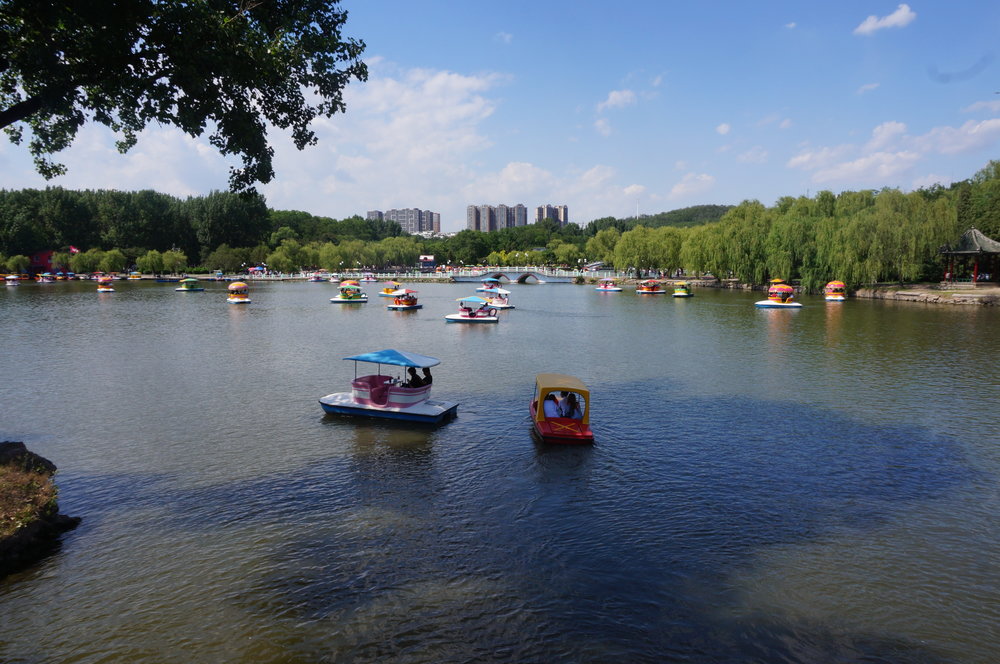
Anshan – 219 Park
While 219 Park is open to the public, you do need to pay a fee to get into the Jade Buddha Palace and its surrounding temple complex. Admission is ¥80 ($15) for regular tickets and ¥30 ($6) for students.
The Palace consists of quite a few temples situated in a larger open courtyard, and you arrive at one of the smaller temples upon first entering.
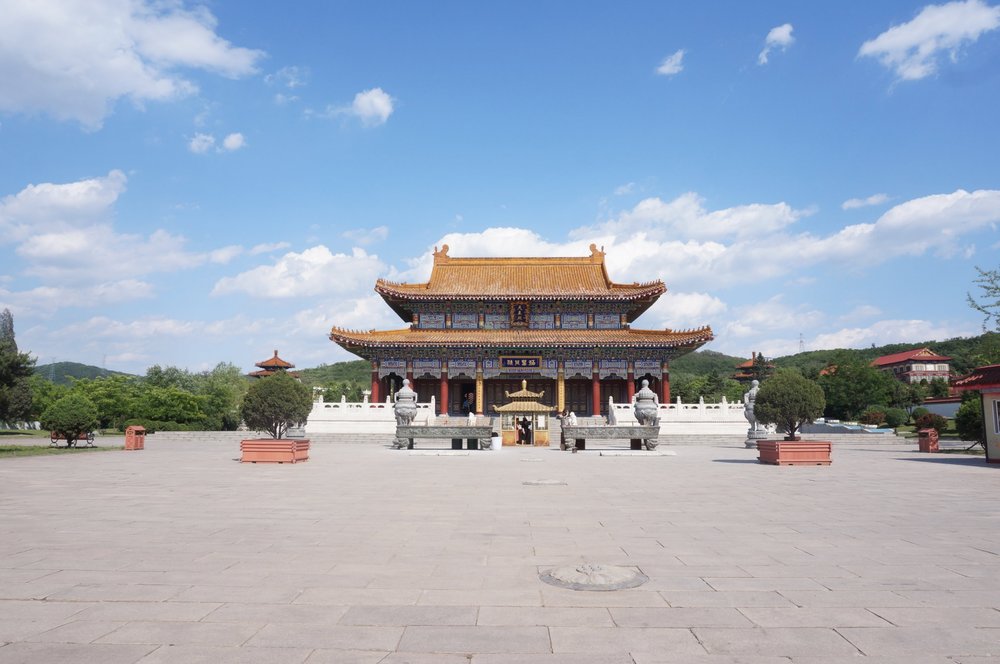
Jade Buddha Palace – Mini temple
In front of the temple are some altars for worship, as well as a little shack where you can buy some incense to make an offering.
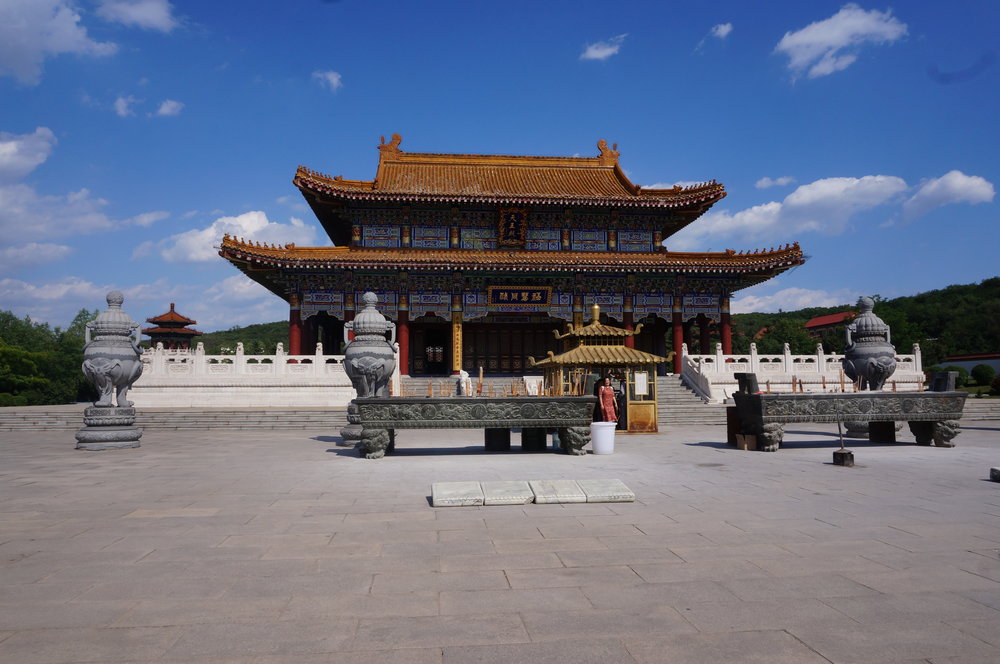
Jade Buddha Palace – Mini temple altars
Keep in mind that upon entering any Buddhist temple, you’ll find a very high threshold at your feet in the doorway. It’s vital to step over it in one go, rather than taking a step on top of the threshold and placing your foot on it – the latter is considered extremely inauspicious and disrespectful.
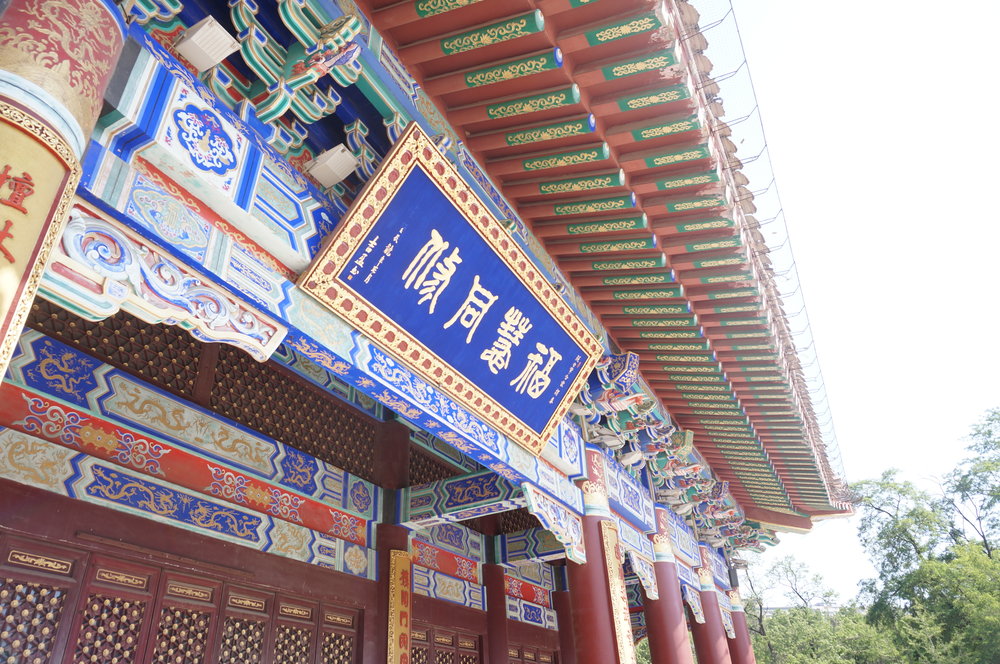
Jade Buddha Palace – Mini temple exterior
The smaller temple contains a few impressive jade sculptures, though they don’t compare at all to the real thing waiting in the next temple.
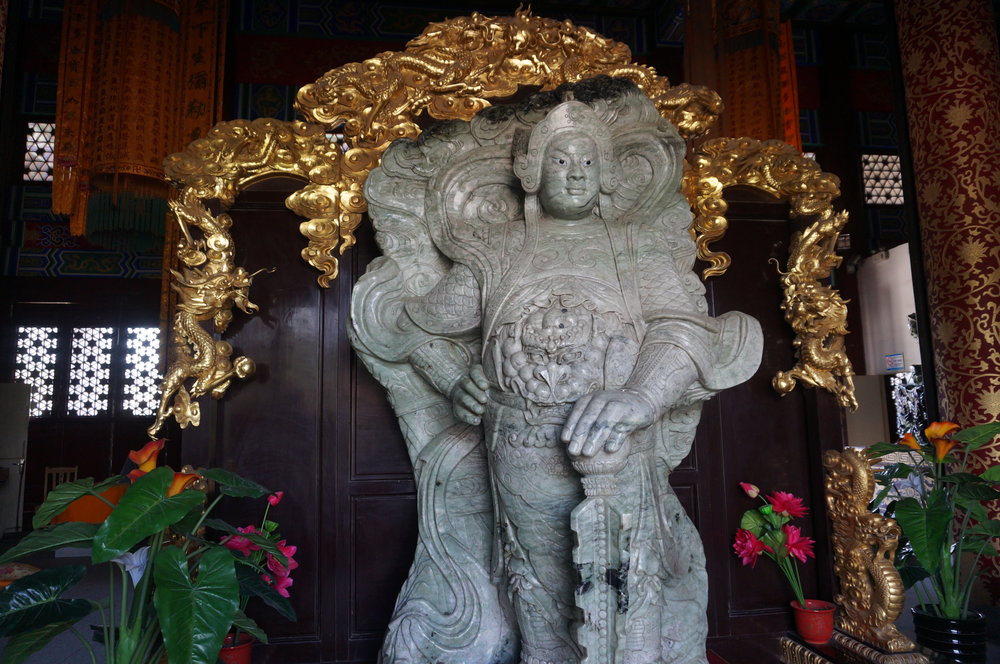
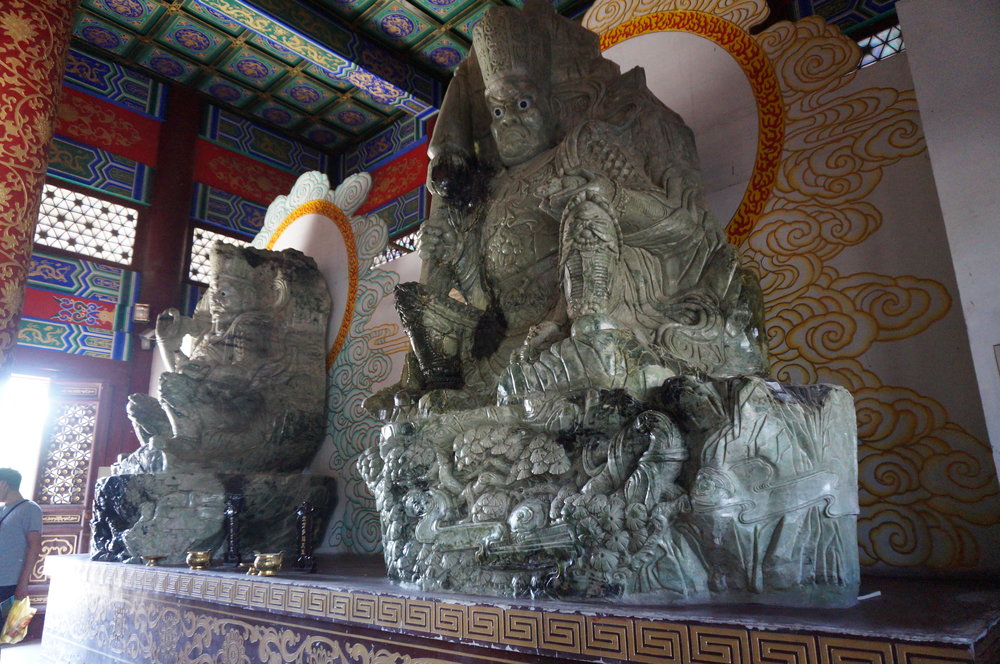
Step out from the back of the mini temple and you’ll see the main temple a short walk away. It’s surrounded by a protective wall, upon which the Guinness World Record plaque is mounted.
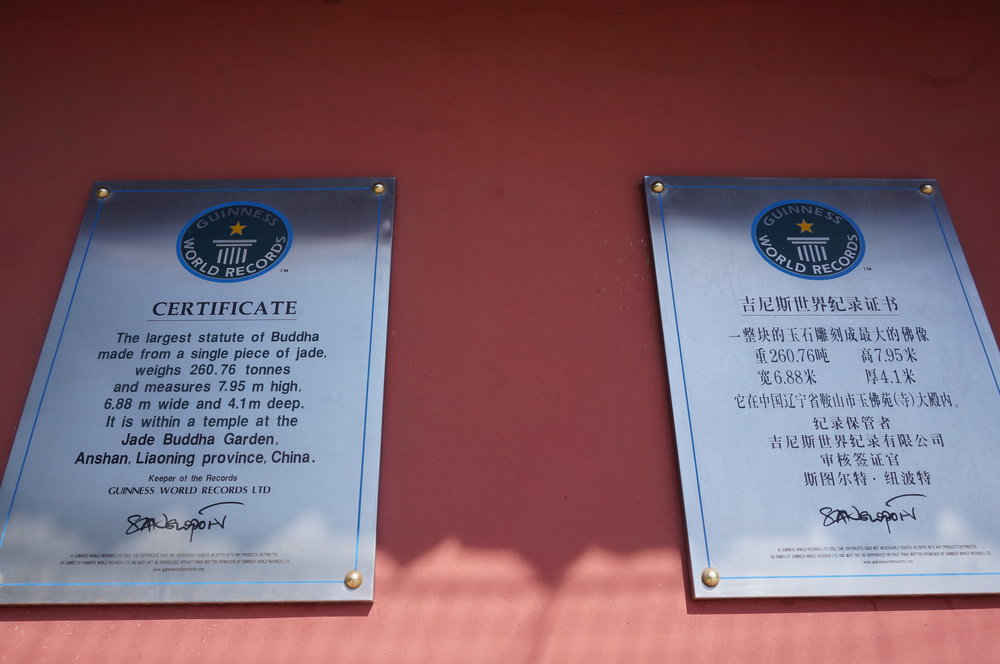
Jade Buddha Palace – Guinness World Record plaque
Go up an elegant set of stone steps to find the altars to the main temple.
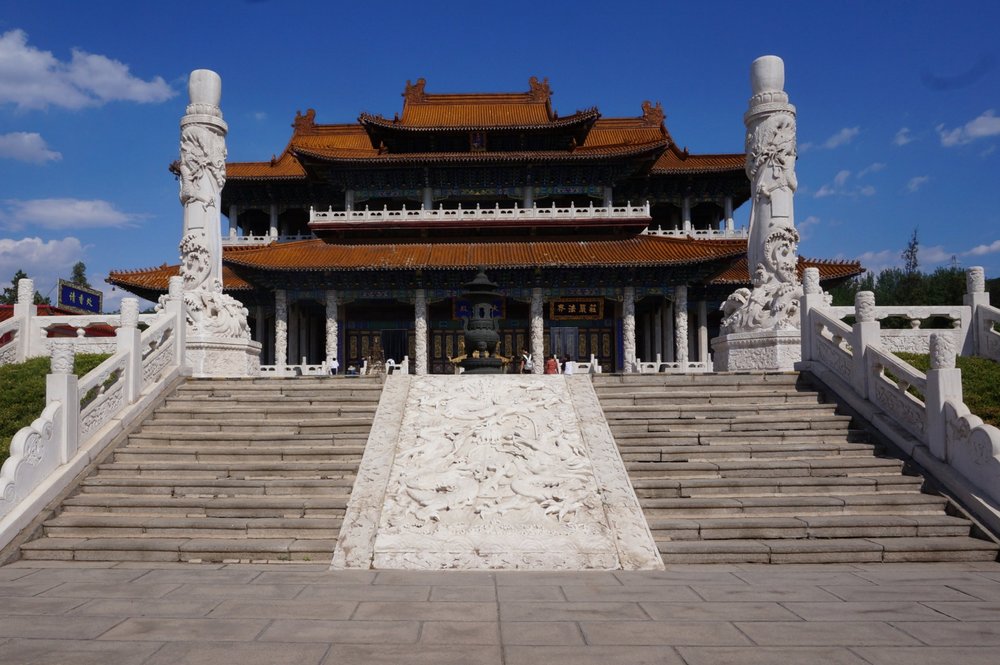
Jade Buddha Palace – Main temple exterior
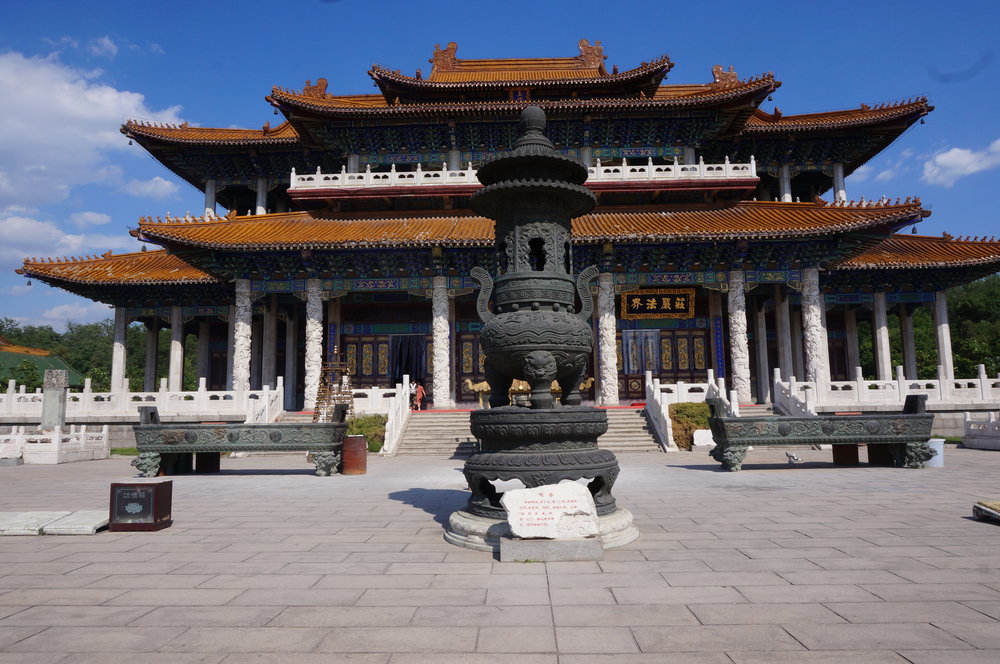
Jade Buddha Palace – Main temple altars
Then it’s time to step into the temple, where the beaming Jade Buddha sculpture sits atop a shrine.
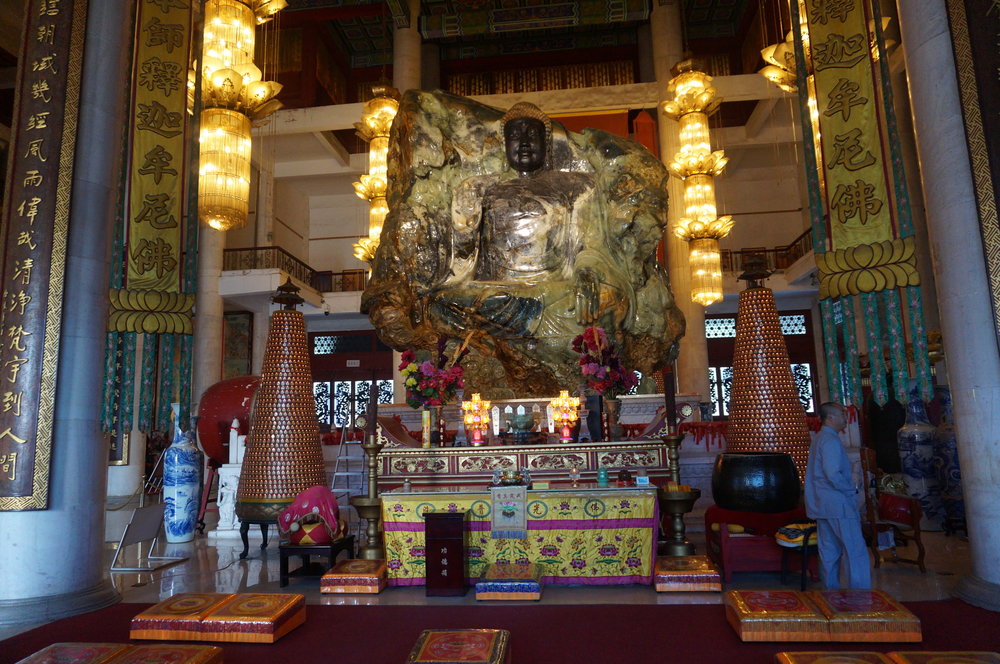
Jade Buddha Palace – Buddha sculpture
This Buddha sculpture was carved out of a single 260-ton piece of jade measuring 7.95m × 6.88m × 4.10m in dimension. To put it bluntly, it’s a real piece of work, having taken a team of 120 sculptors a year and a half to complete.
Truthfully, I wasn’t initially expecting much out of the Jade Buddha Palace, especially out here in a third-tier Chinese city. I wasn’t at all prepared to witness how massive the sculpture was, nor did I expect to be so impressed at the stunning attention to detail that the sculptors demonstrated.
It just goes to show how travel can always lead us to find wonder and amazement in places we least expect it. I find this phenomenon especially pronounced in lands rich in history like China, but really you’ll find that it applies anywhere you go.
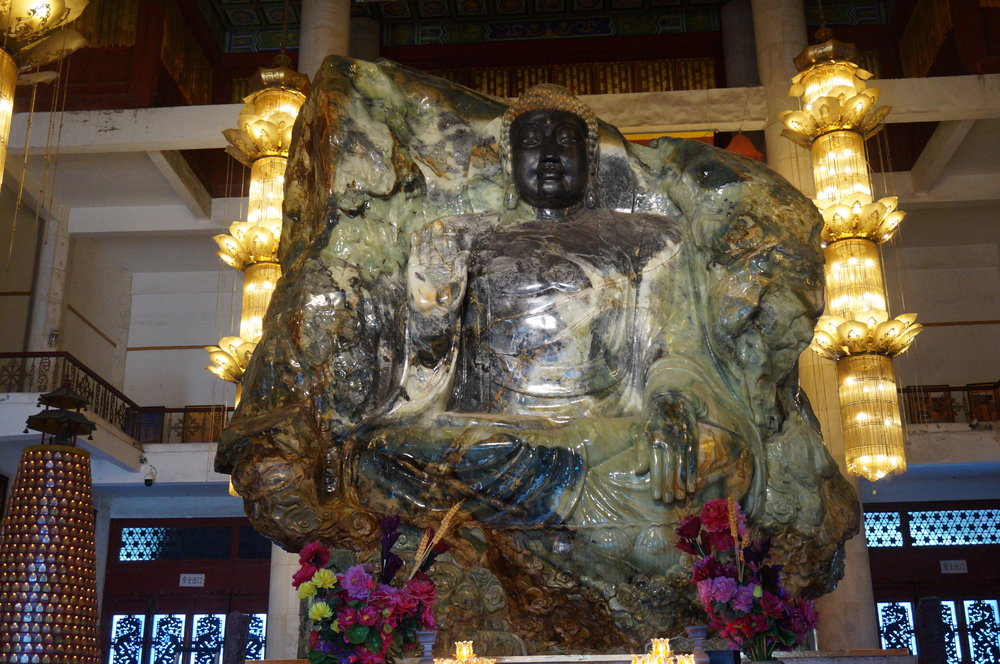
Jade Buddha Palace – Buddha sculpture closeup
As though the front of the Buddha wasn’t imposing enough, the back of the sculpture has another Buddha carved into it, albeit a smaller one.
I learned that the two Buddhas are in fact distinct: the one on the front is a Gautama/Siddhartha Buddha, whereas the one on the rear is actually a Guanyin bodhisattva.

Jade Buddha Palace – Buddha sculpture rear
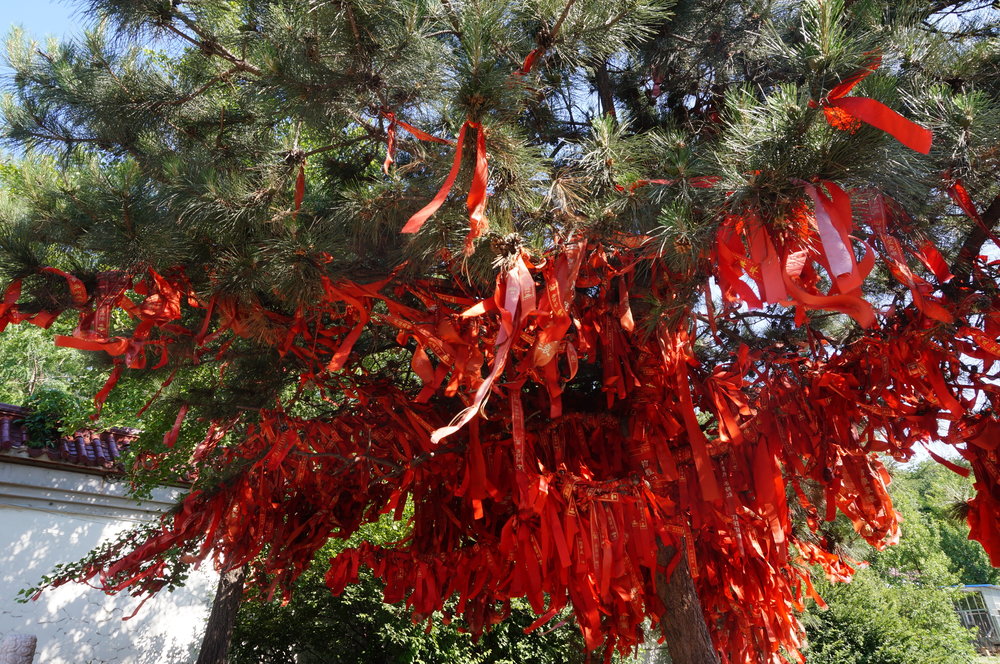
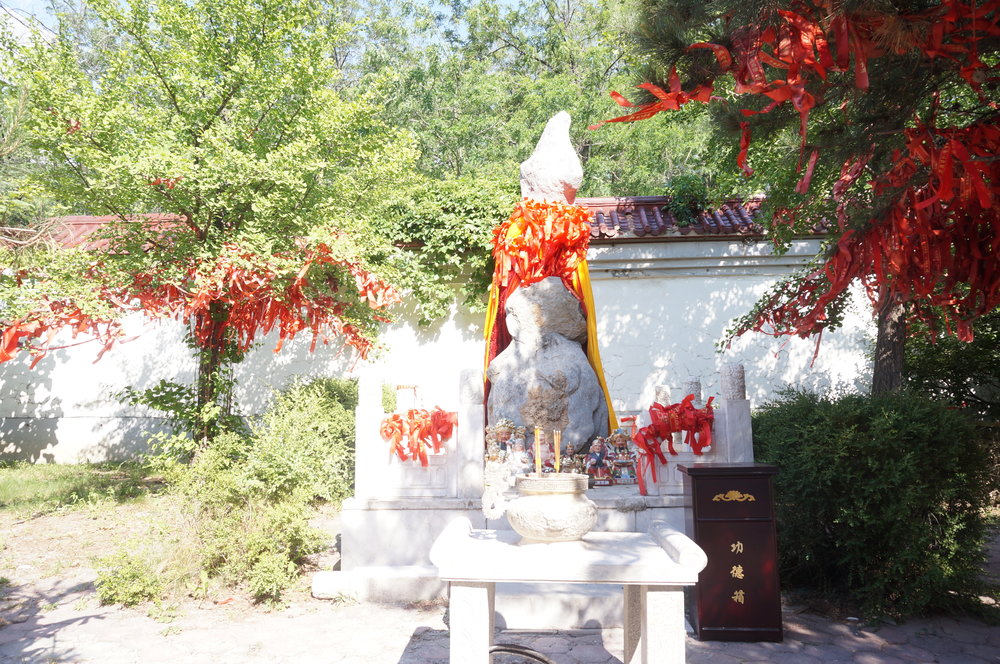
Once you’re done marvelling at the Jade Buddha, check out the area behind the main temple with lots of trees and mini-statues. You can buy red ribbons from the attendant here and hang them up for good luck.
The wall around this area of the Jade Buddha Palace also contains a library with books on Buddhism. You can also climb up to the top of the wall, where you’ll find a Buddhist statue shop.
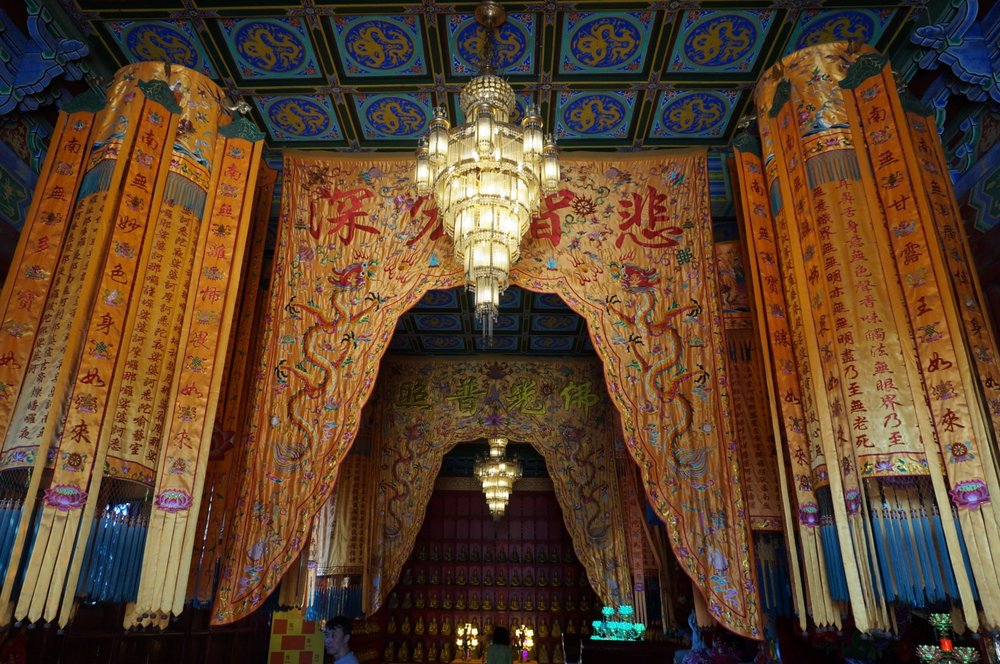
Jade Buddha Palace – Buddha statue shop
The way it works is that you get to designate a Buddhist statue as “your own”, which gets placed up on the wall with everyone else’s statues. The “level” of your statue on the wall, as well as how long your statue remains up there for, is determined by how much you’re willing to spend.
A Buddha statue on the top row costs ¥30,000 ($5600) and remains there for 30 years. Each portion of the wall is designated a certain Chinese character, which is meant to provide blessing in a certain area of life – wealth, longevity, relationships, etc.

Jade Buddha Palace – Buddha statue shop
The last cool thing to check out around here is the nearby Luohan Holy Land, an underground tunnel containing even more Buddha statues – a total of 500, in fact!
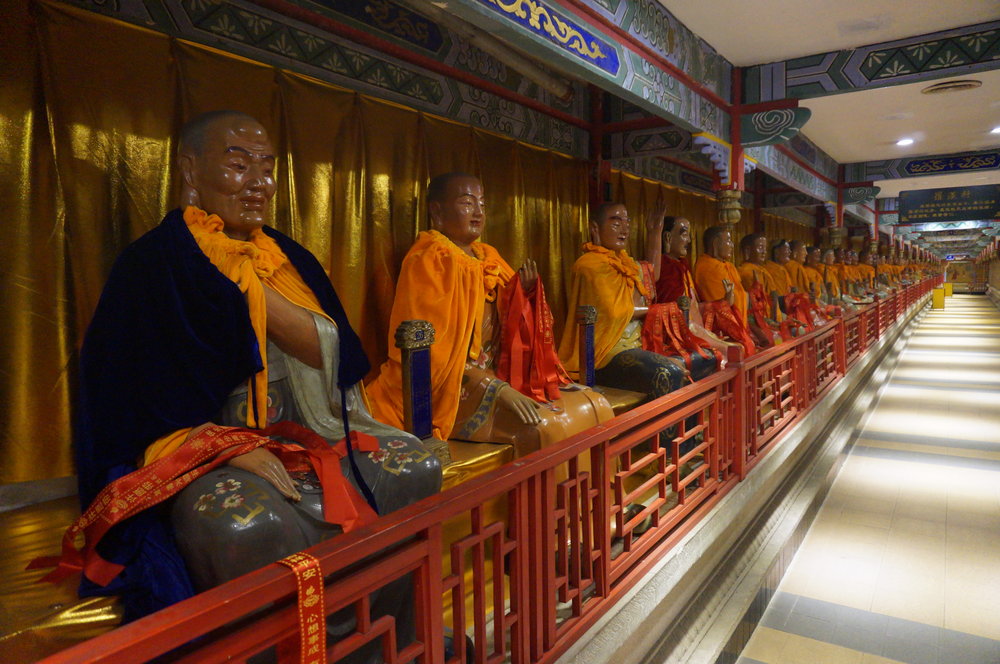
Luohan Holy Land – Buddha statues
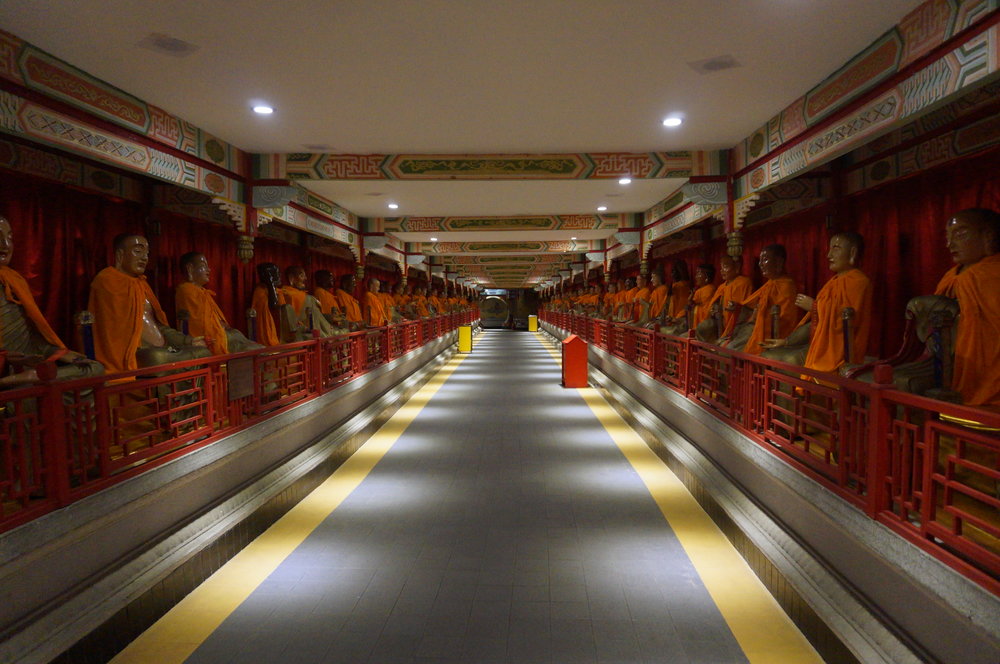
Luohan Holy Land – Buddha statues
The 500 Buddhas lining the hallway here are all dressed up differently and depicted with distinct facial expressions. It’s a lot of fun to walk through and examine the statues, but since there aren’t a lot of tourists around these parts, it can get a little eerie.
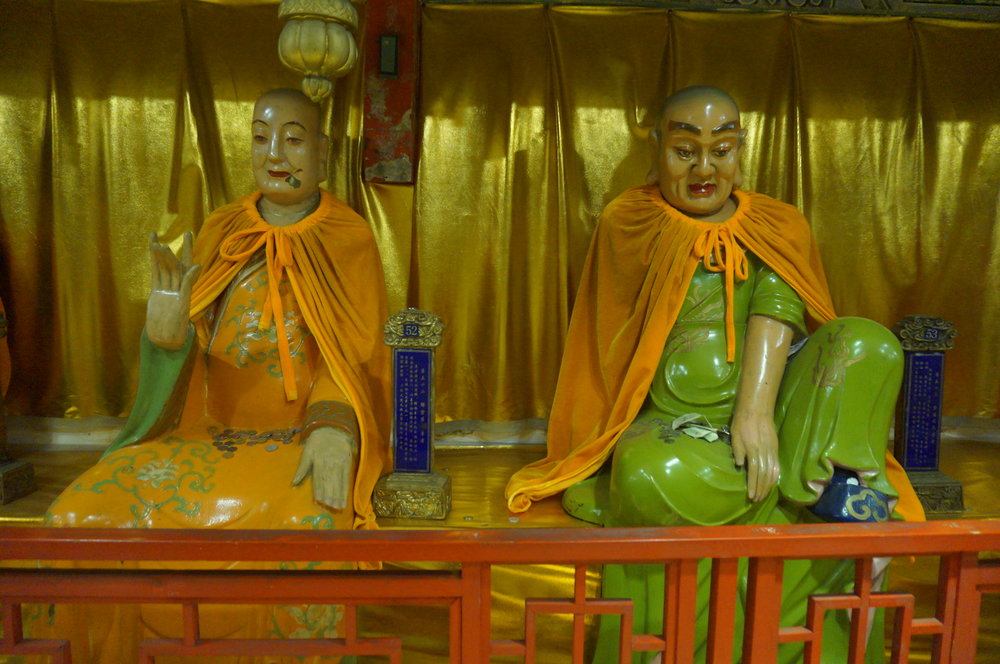
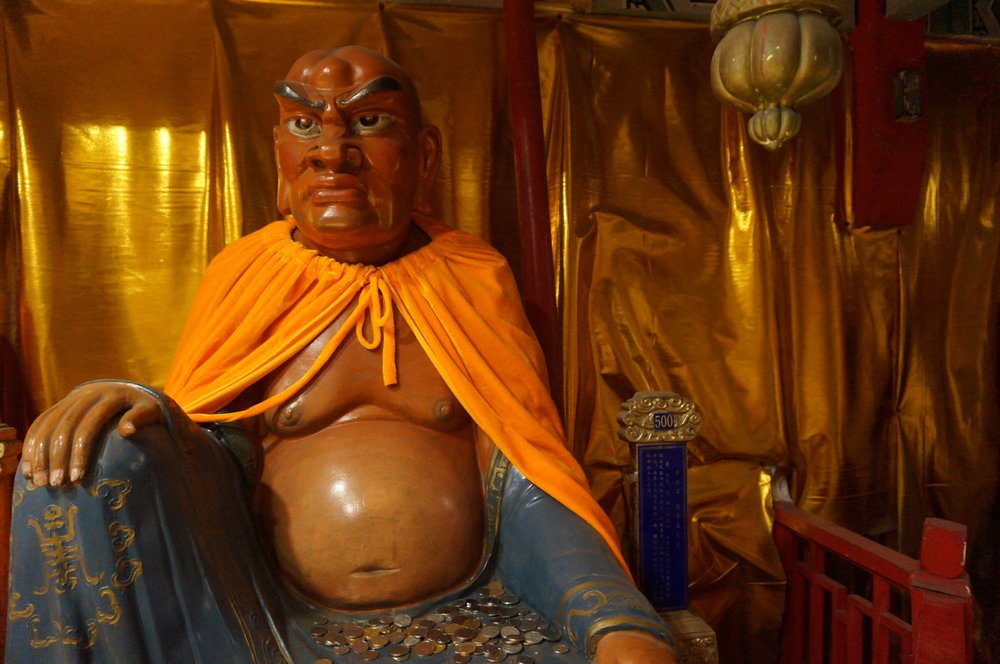
Conclusion
The Jade Buddha Palace, as well as the nearby Luohan Holy Land, is one of China’s many hidden gems, tucked away in the humble surroundings of Anshan. Definitely drop by if you’re in the Liaoning area to see this Guinness World Record holder, especially if you’re at all interested in Buddhist culture.

















